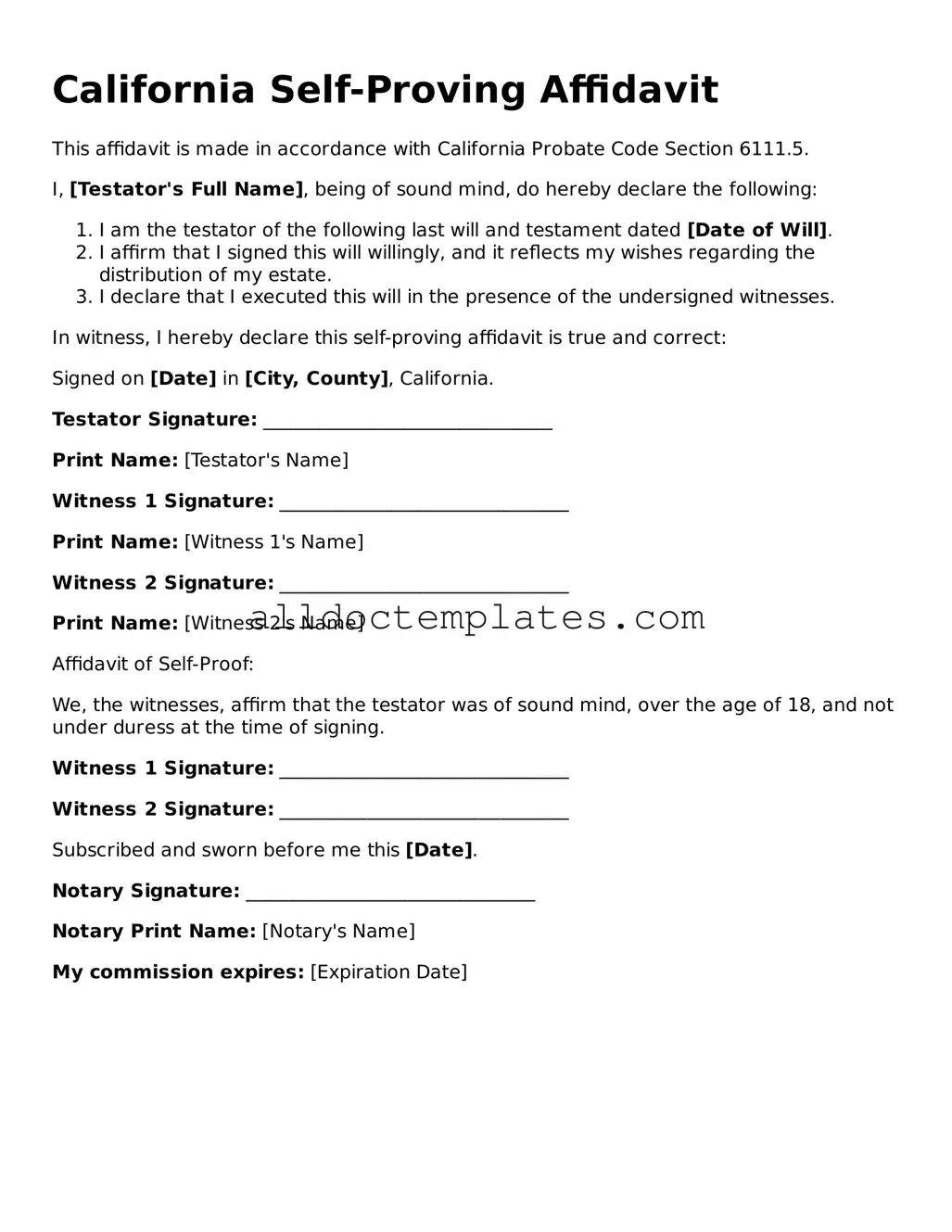California Self-Proving Affidavit
This affidavit is made in accordance with California Probate Code Section 6111.5.
I, [Testator's Full Name], being of sound mind, do hereby declare the following:
-
I am the testator of the following last will and testament dated [Date of Will].
-
I affirm that I signed this will willingly, and it reflects my wishes regarding the distribution of my estate.
-
I declare that I executed this will in the presence of the undersigned witnesses.
In witness, I hereby declare this self-proving affidavit is true and correct:
Signed on [Date] in [City, County], California.
Testator Signature: _______________________________
Print Name: [Testator's Name]
Witness 1 Signature: _______________________________
Print Name: [Witness 1's Name]
Witness 2 Signature: _______________________________
Print Name: [Witness 2's Name]
Affidavit of Self-Proof:
We, the witnesses, affirm that the testator was of sound mind, over the age of 18, and not under duress at the time of signing.
Witness 1 Signature: _______________________________
Witness 2 Signature: _______________________________
Subscribed and sworn before me this [Date].
Notary Signature: _______________________________
Notary Print Name: [Notary's Name]
My commission expires: [Expiration Date]
